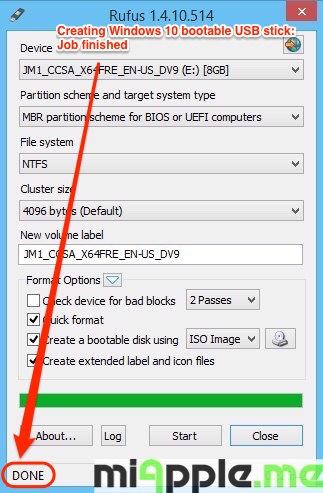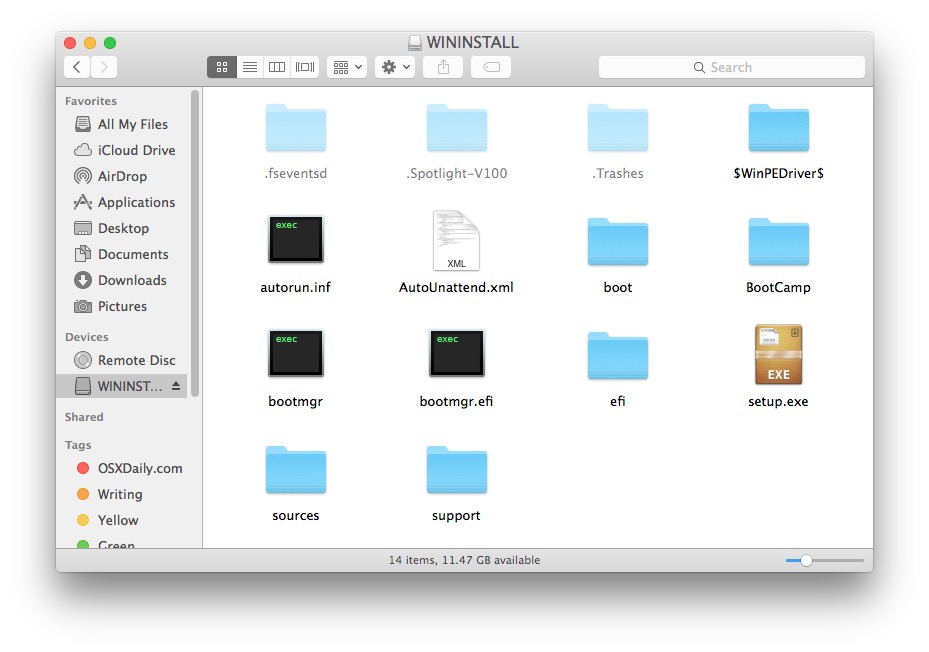

- CREAT A BOOTABLE USB FOR MAC ON A WINDOWS INSTALL
- CREAT A BOOTABLE USB FOR MAC ON A WINDOWS UPDATE
- CREAT A BOOTABLE USB FOR MAC ON A WINDOWS WINDOWS 10
- CREAT A BOOTABLE USB FOR MAC ON A WINDOWS ISO
CREAT A BOOTABLE USB FOR MAC ON A WINDOWS WINDOWS 10
There has been some debate that, when using a very high core count CPU like the 64 core / 128 thread Threadripper 3990x (affiliate link to Amazon), there is a need to use Windows 10 Pro for Workstations. There are more versions of Windows 10 called Windows 10 Pro for Workstations and Windows 10 Enterprise. More Versions of Windows Skip If You Chose Home or Pro I happen to be choosing Windows 10 Pro for my build. The comparison between these two versions from Microsoft can be seen here. There are two main versions of Windows 10: Home and Pro.
CREAT A BOOTABLE USB FOR MAC ON A WINDOWS INSTALL
The first step in creating install media for Windows 10 is, of course, to buy a version of Windows 10.
CREAT A BOOTABLE USB FOR MAC ON A WINDOWS UPDATE
If you have a way that has worked for you, please let me know so that I can update this post! Buying Windows 10 - Picking a version It was my desire to create this post and provide a solution for creating a Windows 10 installer just using OS X. I hate to say this but the option I can think of is to use Boot Camp to install the version of Windows 10 that was purchased for this installs and use that instance to create the boot drive you need. The documentation for Boot Camp Assistant mentions that this option will only be present for some systems anyway. I tried this first and it did not work for me. There are some reports that using Boot Camp Assistant will allow you to create a bootable USB drive with the installation media. What can you do if you don’t have Parallels / Boot Camp installed? This was a fairly simple process that only took several clicks.
CREAT A BOOTABLE USB FOR MAC ON A WINDOWS ISO
I booted Windows up, downloaded the tool freely available from Microsoft for the very purpose of creating such drives, and used the Windows 10 ISO I’d downloaded earlier to create the drive. I happen to have Parallels installed on my MacBook Air with a version of Windows 10 on it. How did I create the new boot drive that worked? I am fairly sure that these errors boiled down to the fact that the install.wim file had to be split up due to the 4GB file size limitation in FAT32 and the fact that OS X can’t write an NTFS drive. These included looking to see if I could make a specific hard drive then boot hard drive (I couldn’t), unplugging every drive but the one I wanted to install Windows on, moving the USB drive to a socket directly wired to the motherboard, and updating the BIOS (which I would have done at some point anyway). Given this, I took several steps to figure out if the drive boot order or drives conflicting were a problem.


It created a USB Drive that I booted up the Windows installer. The process that I lay out below using the terminal to create a bootable USB Drive with the Windows 10 installer on it worked.

Note: Feel free to skip this section and on to what I did that worked if you don’t want to see the process. Note: Here are the parts I chose for the build that this Windows 10 installer USB stick will be used for. Here is how you create a Windows 10 install USB drive from OS X. Let’s say that your computer that runs Windows has died in such a way that you have to re-install Windows and you don’t have the installation drive for it? AND that the only computer you have access to in order to create such and installation drive is an Apple / OS X machine? This is what happened to me recently.


 0 kommentar(er)
0 kommentar(er)
